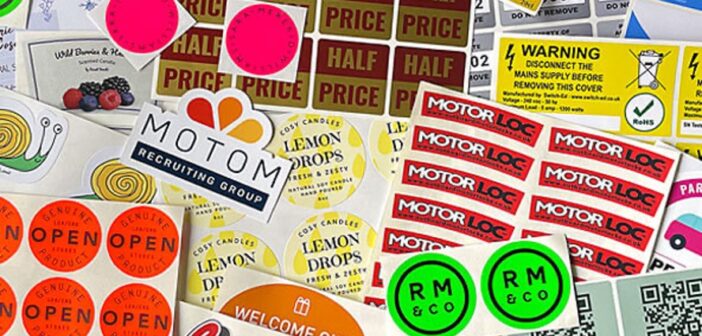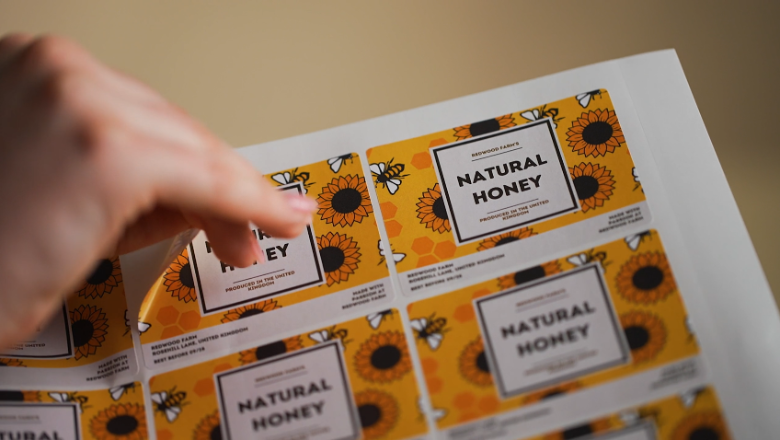The significance of labelling stretches far beyond a mere sticker or tag on a product. It’s a crucial element in marketing, conveying essential information and connecting with the consumer on a personal level.
This comprehensive guide demystifies the art and science of labelling, presenting a practical approach to selecting the perfect label. But let’s not get ahead of ourselves. Before diving into the vast range of materials and adhesives, let’s start with the basics.
Understanding Your Needs
Identifying the purpose of your label is step one. Are you aiming to improve your product’s appearance, or is the goal to provide critical information. Your objective will guide your material choice, design complexity, and adhesive strength.
Material Matters
The choice between paper and vinyl is not as straightforward as it seems. Paper labels, with their natural texture, convey an eco-friendly vibe and are perfect for products that don’t face harsh conditions. On the flip side, vinyl labels, with their durability, are the champions for products that encounter moisture or oils. Each category serves distinct purposes, from enhancing your product’s eco-credentials with paper stickers to ensuring longevity and visibility with waterproof vinyl or specialty materials. By considering each material’s durability, finish, and environmental impact, you can make an informed decision that aligns with your product’s needs and your brand’s ethos.
Paper Stickers
These are the go-to for eco-friendly initiatives, designed for applications where resilience against harsh conditions isn’t paramount. They find their place on address labels, dry food and drinks labels, candle labels, and more, serving various uses from birthday to wedding stickers. Mostly available in a range of finishes, from uncoated, textured, gloss, and brown Kraft paper, these stickers allow for a range of aesthetic choices while keeping the environmental footprint in mind.
Vinyl Stickers
Crafted for encounters with liquids, waterproof vinyl labels are indispensable. Their applications span across various industries, from cosmetics, candles, asset stickers, and beyond, ensuring durability and integrity in moist environments. Varieties such as white gloss vinyl, clear gloss vinyl, and matt laminated vinyl, among others, offer solutions that are not only practical but also visually appealing, safeguarding your product’s branding in any condition.
Specialty Materials
A wide range of specialty materials is available for those seeking to make a significant visual impact or address specific needs. Whether for luxurious branding, standout marketing materials, or functional uses like correcting printed errors, there’s a material that ticks all the boxes. Options include metallic vinyl for a premium look, fluorescent materials for high visibility, and window cling vinyl for temporary promotional displays. Crystal frost vinyl and holographic vinyl also offer unique finishes that can elevate your product’s presentation to new heights.
The Adhesive Choice
Adhesives ensure labels stay put. Removable adhesives are gentle, leaving no trace behind, while permanent adhesives are the standard, offering a solid bond for a variety of surfaces. An extra-permanent, high-tack adhesive is your best option for the most challenging environments or low-energy surfaces like some plastics and textured materials.
Eco-Friendly Choices
As sustainability becomes a norm rather than a bonus, the material of your label can reflect your brand’s commitment to environmental stewardship. Choosing green materials, such as brown Kraft paper, not only aids the planet but also resonates with eco-conscious consumers.
Application and Longevity
Where and how your label will live its life is a tale worth considering. Will it brave the outdoors or cosy up on a pantry shelf. Your label’s environment plays a pivotal role in material and adhesive selection. After all, a label that fades or peels prematurely is like a joke that falls flat disappointing.
Legal and Regulatory Compliance
Navigating the legal landscape can be tricky. Certain information must be present on your label by law depending on your product. This could include ingredients, allergen information, or safety warnings. Compliance is not just important it’s compulsory.
Designing Your Label
A well-designed label does more than inform it captivates. It should reflect your brand’s ethos and appeal to your target demographic. This is where creativity meets strategy. Remember, your label design is your brand’s handshake with the customer. Many companies now offer online design tools, like Handy Labels sticker maker, providing a seamless way to bring your vision to life with custom shapes, sizes, and finishes.
The Fine Print and Label Size and Text Readability
Size does matter when it comes to labels. Too small, your message gets lost too large, and it overwhelms the product. The ideal label strikes a balance, big enough to convey your message clearly but proportionate to your product. The text’s legibility is paramount if your customer has to squint to read your label, you’ve already lost their interest. Effective design balances aesthetics with functionality, ensuring that every word on your label is as clear as it is compelling. This balance is crucial in creating a label that not only meets legal requirements but also engages and informs the consumer.
Get a Sample
Trying out a sample or two before you commit to a bulk order can save you from later regrets. Material samples allow you to test the look, feel, and adhesive strength, ensuring your label matches your expectations. Almost all UK printing companies do offer material sample packs.
Tell Your Brand’s Story
Remember, your label is more than just a sticker it’s a narrative element. It should communicate your brand’s values, connect emotionally with consumers, and distinguish your product in a crowded market.





